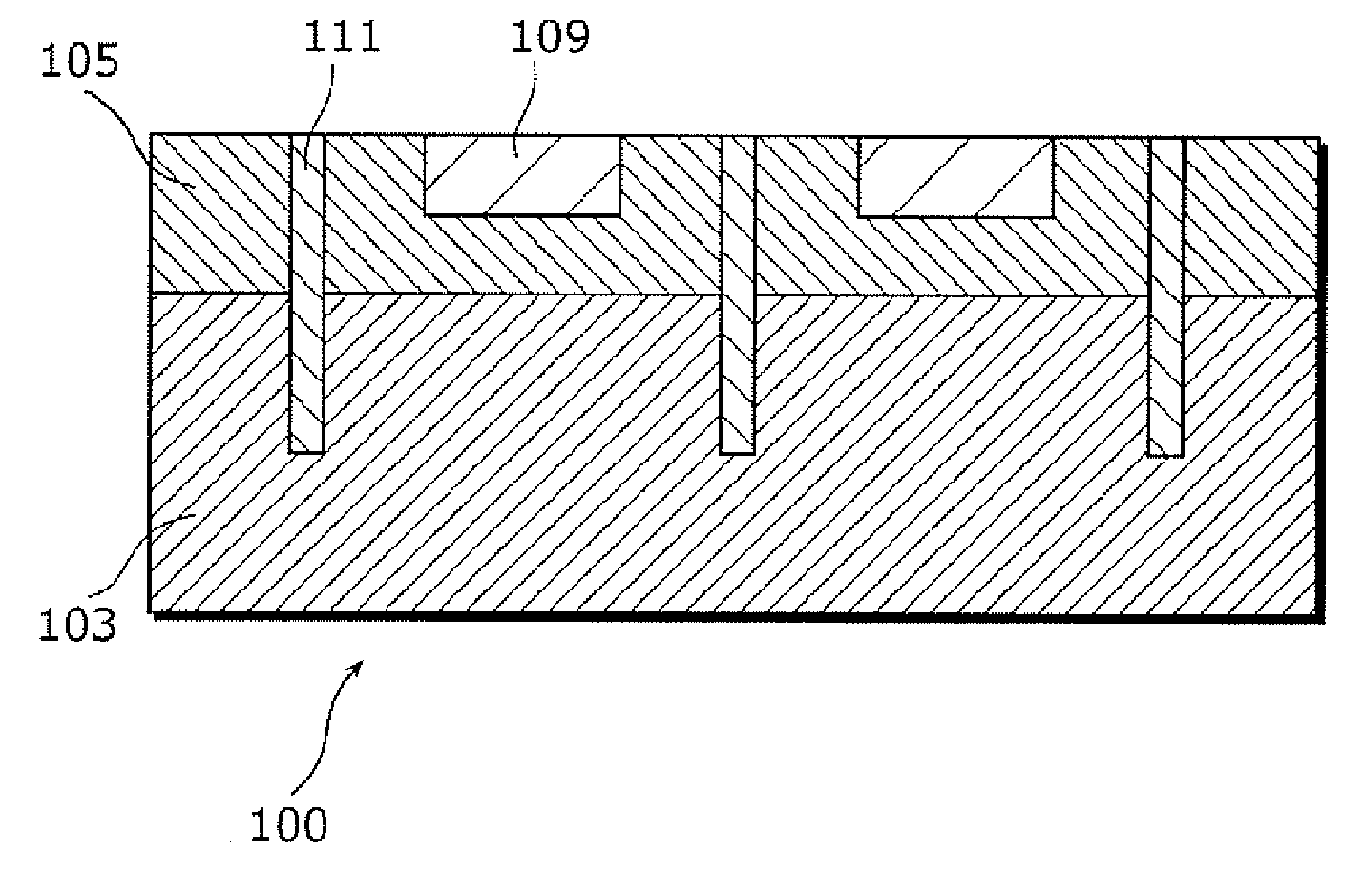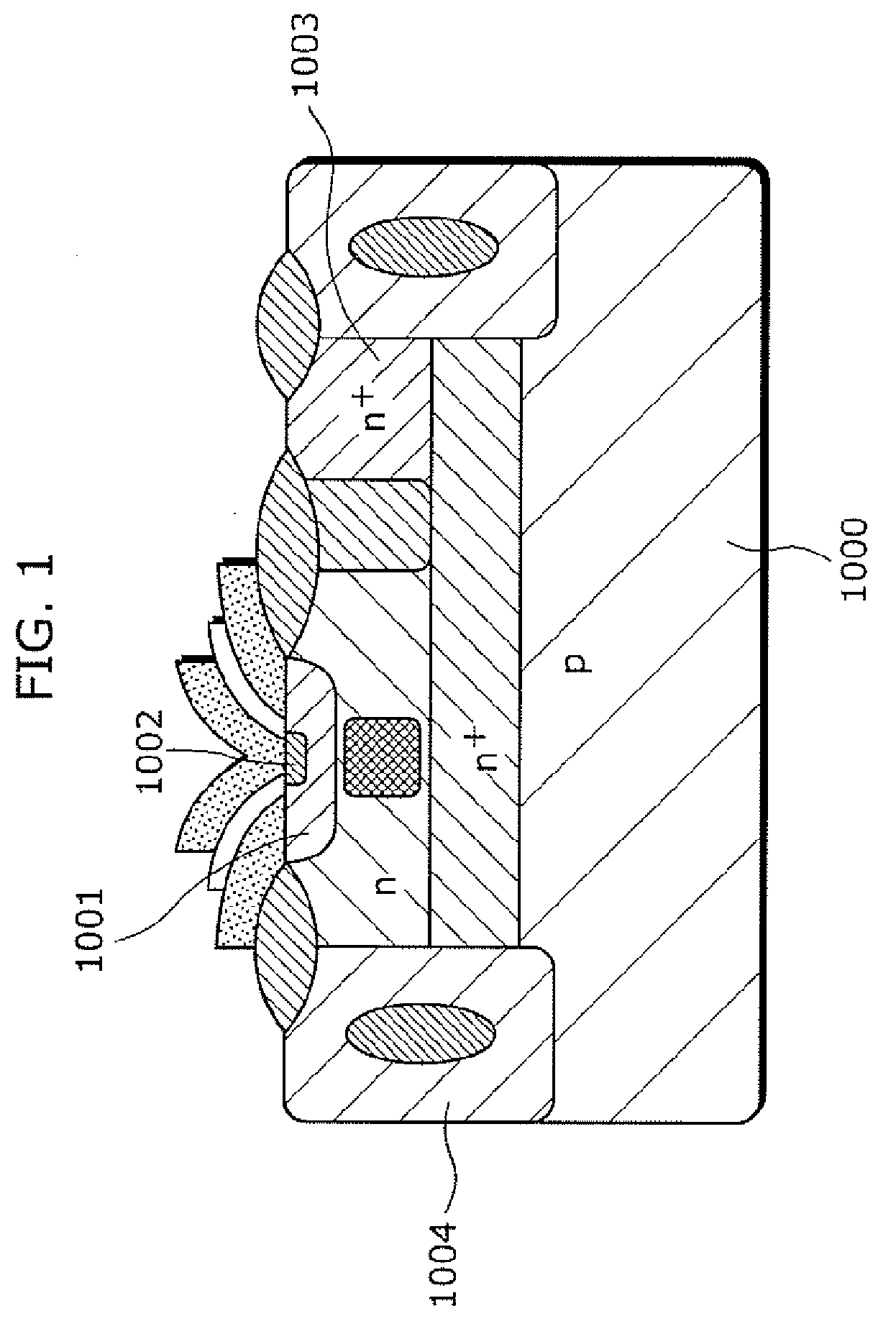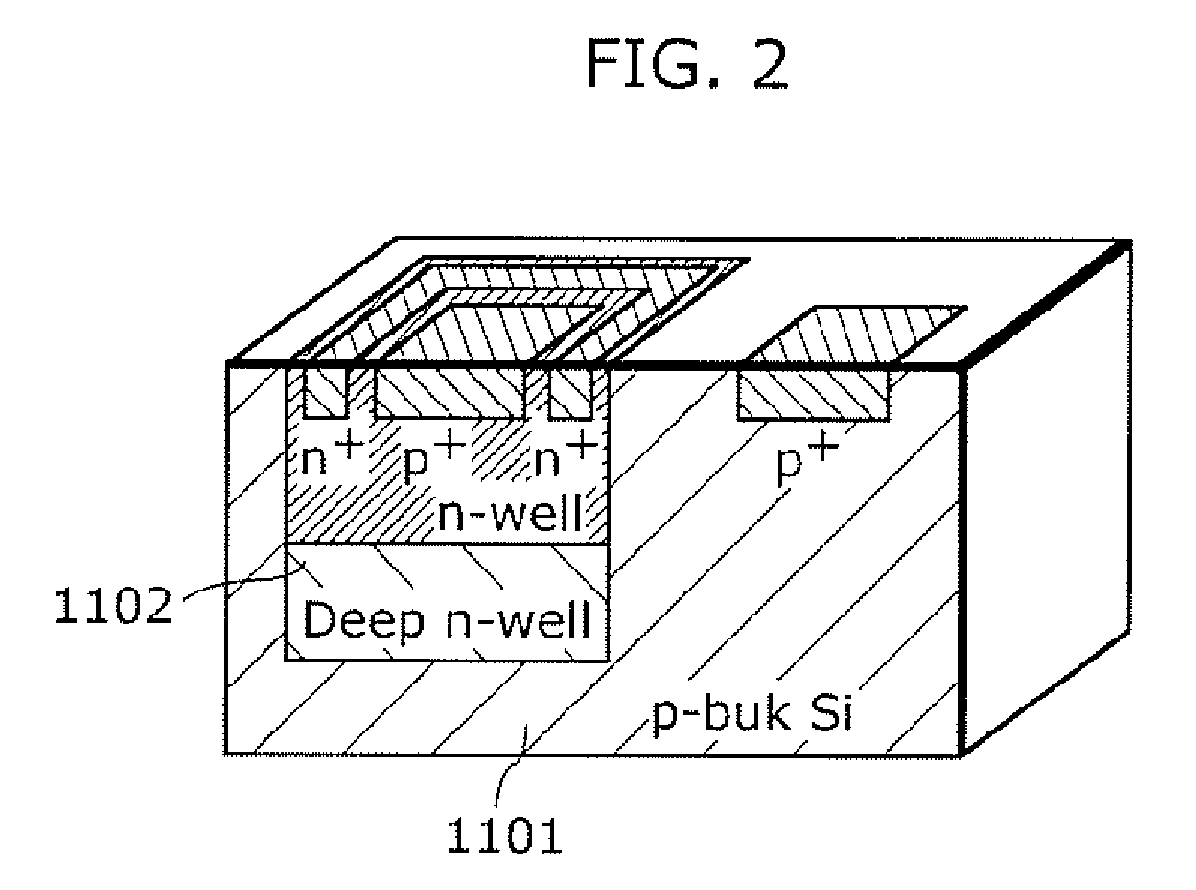Semiconductor device
a technology of semiconductor devices and semiconductors, applied in the direction of semiconductor devices, basic electric elements, electrical appliances, etc., can solve the problems of reducing the quality of signals present in other parts, affecting the quality of signals, and not being able to secure sufficient impedance, so as to prevent degradation of signal quality, improve isolation in semiconductor devices, and improve isolation
- Summary
- Abstract
- Description
- Claims
- Application Information
AI Technical Summary
Benefits of technology
Problems solved by technology
Method used
Image
Examples
first embodiment
[0057]FIG. 4 is a cross sectional view showing a structure of the semiconductor device according to the first embodiment.
[0058] In this semiconductor device, a first layer 103, a second layer 105, and trench-type insulating regions 111 are formed in a semiconductor substrate 100.
[0059] The first layer 103 is a high resistivity substrate of a first conductivity type having a resistivity higher than 10 Ωcm and lower than 1 kΩcm, and is formed in the semiconductor substrate 100.
[0060] The second layer 105 is a low resistivity substrate of a second conductivity type having a resistivity lower than that of the first layer 103, for example, having low resistivity of 10 Ωcm, and is formed on a surface side in the semiconductor substrate 100 so as to be located above the first layer 103. In a predetermined part of the second layer 105, a plurality of semiconductor elements or semiconductor circuits (hereinafter simply referred to as semiconductor elements) 109 are formed. Moreover, the s...
second embodiment
[0077]FIG. 8 is a cross sectional view showing a structure of the semiconductor device according to the second embodiment.
[0078] This semiconductor device differs from the semiconductor device in the first embodiment in having first embedded layers 213 formed in the first layer 103 and second embedded layers 215 formed in the second layer 105.
[0079] The first embedded layer 213 is a second conductivity-type low resistivity layer having a resistivity lower than that of the first layer 103 so as to he formed in contact with the second layer 105.
[0080] The second embedded layer 215 is a second conductivity-type low resistivity layer having a resistivity lower than that of the first layer 103 and is formed so as to surround the semiconductor element 109 and be located between the trench-type insulating region 111 and the semiconductor element 109. The second embedded layers 215 vertically run from the surface of the semiconductor substrate 100 to the depth direction across the second...
third embodiment
[0084]FIG. 9 (a) is a top surface view of the semiconductor device according to the third embodiment, and FIG. 9 (b) is a cross sectional view of the same semiconductor device (cross sectional view in A-A′ line of FIG. 9 (a)).
[0085] This semiconductor device differs from the semiconductor device in the first embodiment in having a plurality of trench-type insulating regions between two semiconductor elements 109, in other words, having a first trench-type insulating region 311 and a second trench-type insulating region 321.
[0086] The first trench-type insulating region 311 and the second trench-type insulating region 321 are formed so as to surround each of the semiconductor elements 109, and electrically isolate the surrounded semiconductor element 109 from the other semiconductor elements 109. The first trench-type insulating region 311 and the second trench-type insulating region 321 vertically run from the surface of the semiconductor substrate 100 to the depth direction acros...
PUM
 Login to View More
Login to View More Abstract
Description
Claims
Application Information
 Login to View More
Login to View More - R&D
- Intellectual Property
- Life Sciences
- Materials
- Tech Scout
- Unparalleled Data Quality
- Higher Quality Content
- 60% Fewer Hallucinations
Browse by: Latest US Patents, China's latest patents, Technical Efficacy Thesaurus, Application Domain, Technology Topic, Popular Technical Reports.
© 2025 PatSnap. All rights reserved.Legal|Privacy policy|Modern Slavery Act Transparency Statement|Sitemap|About US| Contact US: help@patsnap.com



